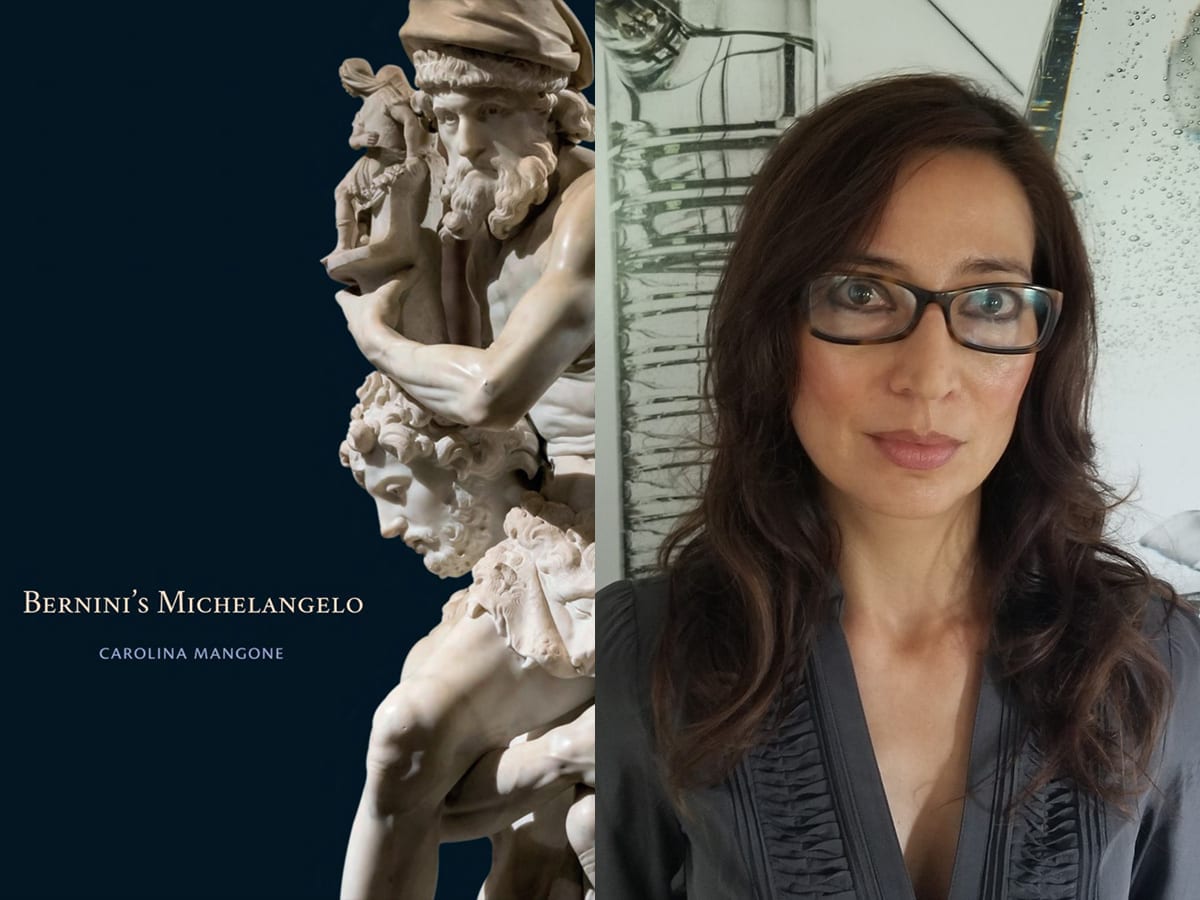Carolina Mangone is an Assistant Professor in the Department of Art and Archaeology, studying Renaissance/Baroque Art and Architecture. Her latest book is Bernini’s Michaelangelo, published by Yale University Press in June, 2020.
How did you get the idea for this project?
It emerged from a paper I wrote in graduate school. At the time, I was convinced that my dissertation would examine the Renaissance painter Parmigianino. In the course of writing, I realized that my seminar paper only just scratched the surface of the topic and that the enduring vitality of Michelangelo’s example to Bernini’s art was too exciting to ignore. This seminar paper ultimately led to an unforeseen shift in my scholarly attention from Renaissance painting to Baroque sculpture and, ultimately, also to architecture.
How has your project developed or changed throughout the research and writing process?
Like any project that gestates for many years, this book changed significantly from my initial conception. One realization, namely that the project should include architecture as well as sculpture, especially shaped its current form. What little scholarship there was on Bernini’s imitation of Michelangelo generally minimized his architectural output, which is often regarded as merely derivative – especially when compared to the inventiveness of his sculptural emulation. Rather than balk at this difference, I decided to examine the purposefulness of both transparent and transformative imitation to Bernini’s michelangelism. I recognized that by bringing architecture and sculpture together I could reconstruct, more fully than before, the scope of Bernini’s artistic enterprise in imitating Michelangelo’s works and the theoretical norms they were thought to embody. This fundamentally altered my project from an examination of sculptural self-fashioning, to a book about the complexities and ambitions of an entire career – one that shaped seventeenth-century Rome and its artistic premises.
What questions for future investigation has the project sparked?
In writing a book about emulation, I found myself pondering what is and what isn’t imitable. It struck me that when Bernini or any other early modern artist imitated one of Michelangelo’s many unfinished (non-finito) statues, they produced imitations that finished the areas left incomplete in the original. It was also remarkable that they did not carve original statues that would themselves appear “unfinished.” Indeed, it isn’t until Rodin in the 19th century that the non-finito became an imitable sculptural aesthetic. Why didn’t early modern sculptors feel that they, like Michelangelo, could leave works seemingly unfinished? This question drives one facet of my current book project, Michelangelo, Imperfect, which examines Michelangelo’s production of unfinished sculptures and the pre-modern reception of these objects by artists, collectors, and theorists. Although Bernini will not figure in this new project, my conviction that the non-finito is a topic worthy of fresh examination was propelled by a curious a letter from 1618 in which a patron inquires if he can purchase an unfinished Michelangelo at a cut-rate price so that the young Bernini can complete it. As far as we know, Bernini never “finished” a Michelangelo. But the very notion that one could do so upended everything that scholarship had taught me about the exceptionality of Michelangelo’s unfinished works – clearly the non-finito was not as stable or inviolable a category of Michelangelo’s art as we have generally supposed.
Why should people read this book?
The accomplishments of the great artists of the past are usually appreciated individually. My book forces us to see the art of two acknowledged giants, one Renaissance and the other Baroque, in rapport with one another. It invites the reader to look afresh at Michelangelo, with Bernini as a guide. Focusing on imitation’s retrospective aspects as well as its generative and prospective potential, I show how Bernini understood Michelangelo’s work and its intentions and mobilized them to new ends. Bernini’s imitations of Michelangelo are as exciting and consequential as his more widely studied “revolutionary” works that have no apparent precedent. This book is for readers interested in the originality of imitation.
Learn more about other recent publications by Princeton University faculty in the Humanities by exploring our Faculty Bookshelf.
















